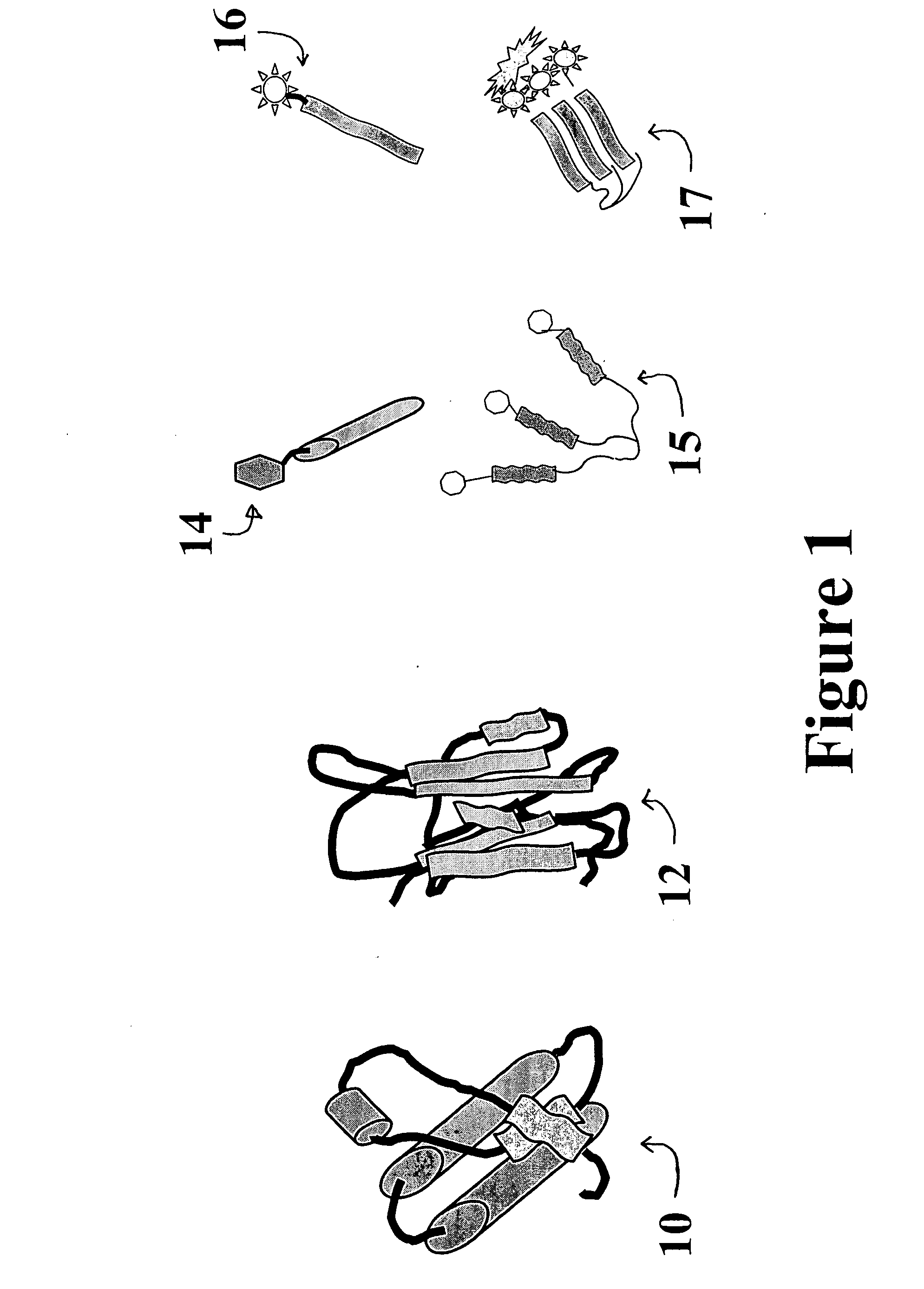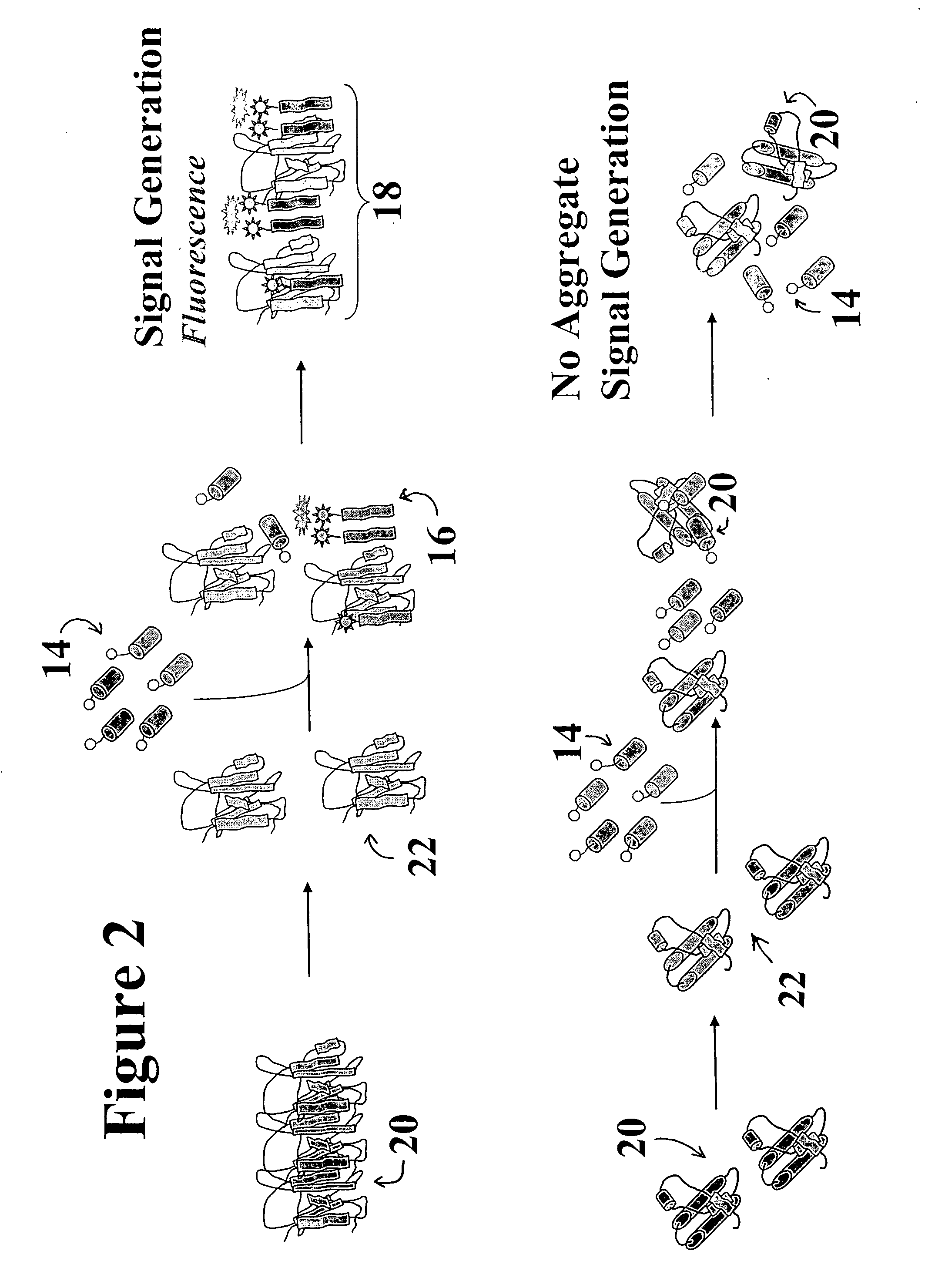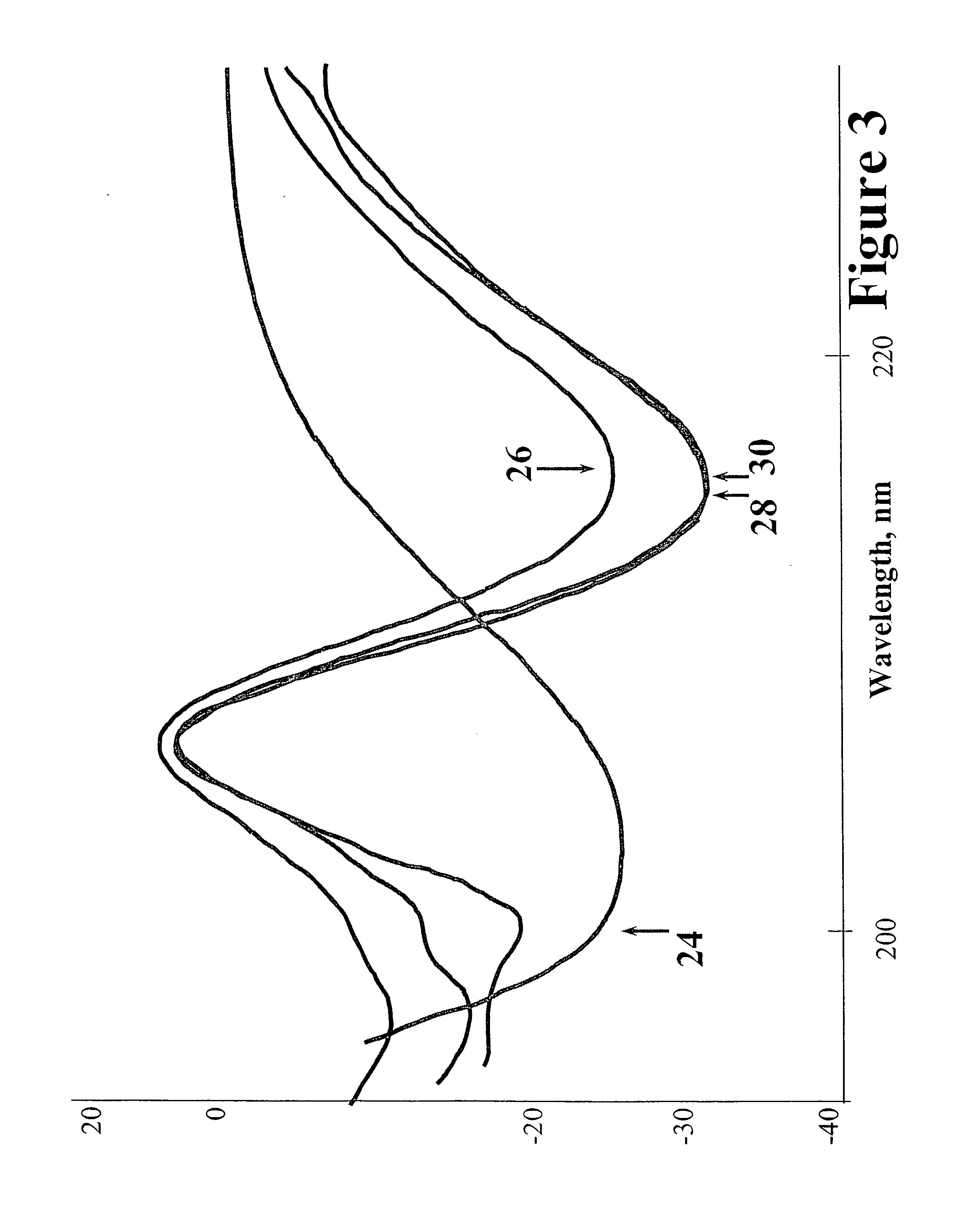Misfolded protein sensor method
a sensor method and protein technology, applied in the field of catalytic conformational sensor method, can solve the problems of difficult diagnosis of “folding diseases”, impairment of cellular viability, and difficult diagnosis of diseases caused by prions, and achieve the effect of adapting the level of selectivity and specificity
- Summary
- Abstract
- Description
- Claims
- Application Information
AI Technical Summary
Benefits of technology
Problems solved by technology
Method used
Image
Examples
Embodiment Construction
[0064] It is to be understood that the invention is not limited to the examples described herein. All technical and scientific terms used herein have meanings as commonly understood by one of ordinary skill in the art unless otherwise defined. All publications referred to herein are wholly incorporated by reference to describe methods and materials for implementing aspects of the invention.
[0065] The present invention detects the presence of abnormal proteins and proteinaceous particles based on a method that utilizes catalytic propagation. Upon interaction of a sample, containing abnormal proteins or proteinaceous particles, with a peptide probe of the invention, the peptide probe undergoes conformational changes resulting in the formation of aggregates. The addition of the abnormal proteins and proteinaceous particles catalyzes the formation of the aggregates and causes further propagation of this conformational transition. The resulting aggregates are then easily detected using ...
PUM
| Property | Measurement | Unit |
|---|---|---|
| pH | aaaaa | aaaaa |
| excitation wavelengths | aaaaa | aaaaa |
| excitation wavelengths | aaaaa | aaaaa |
Abstract
Description
Claims
Application Information
 Login to View More
Login to View More - R&D
- Intellectual Property
- Life Sciences
- Materials
- Tech Scout
- Unparalleled Data Quality
- Higher Quality Content
- 60% Fewer Hallucinations
Browse by: Latest US Patents, China's latest patents, Technical Efficacy Thesaurus, Application Domain, Technology Topic, Popular Technical Reports.
© 2025 PatSnap. All rights reserved.Legal|Privacy policy|Modern Slavery Act Transparency Statement|Sitemap|About US| Contact US: help@patsnap.com



